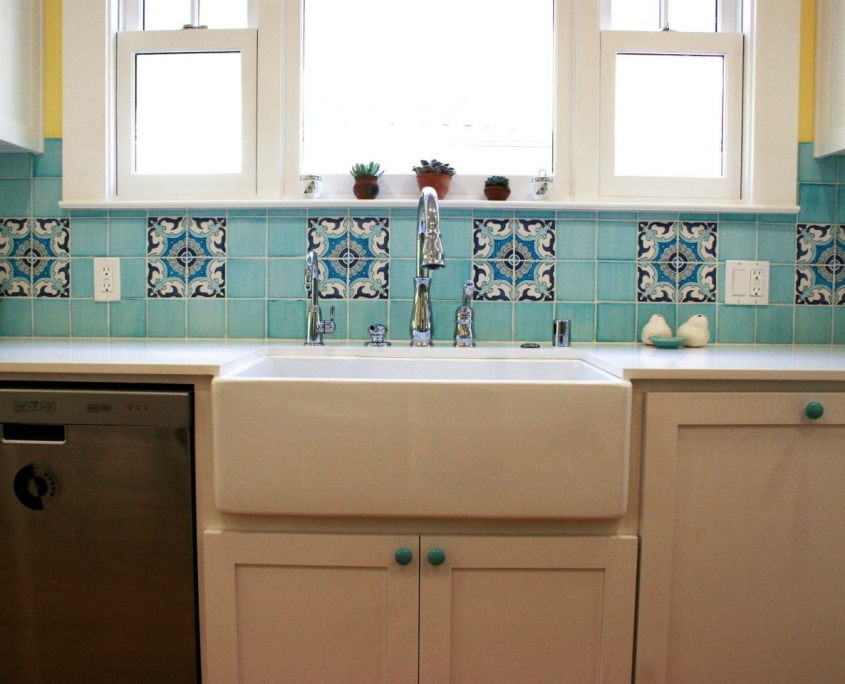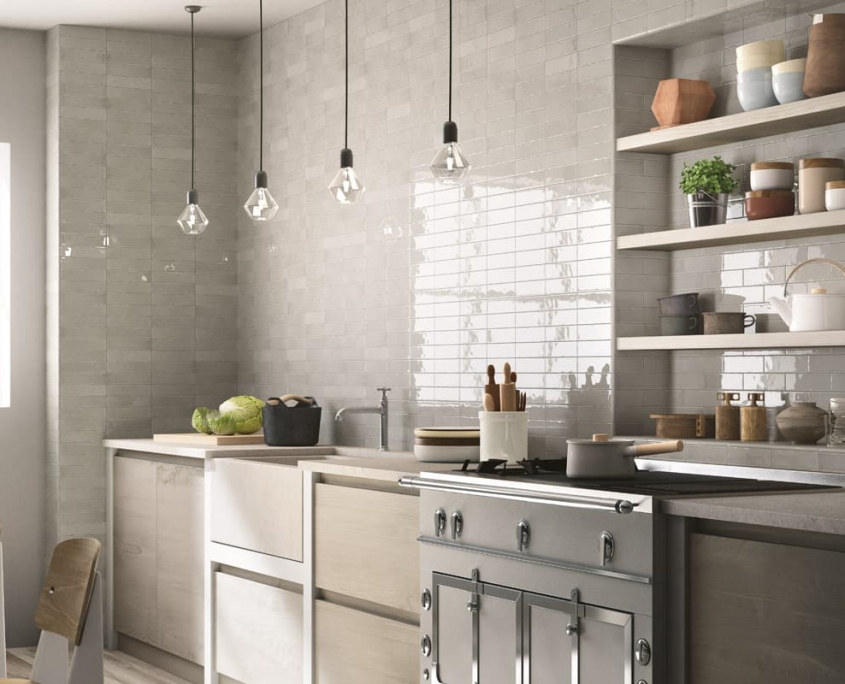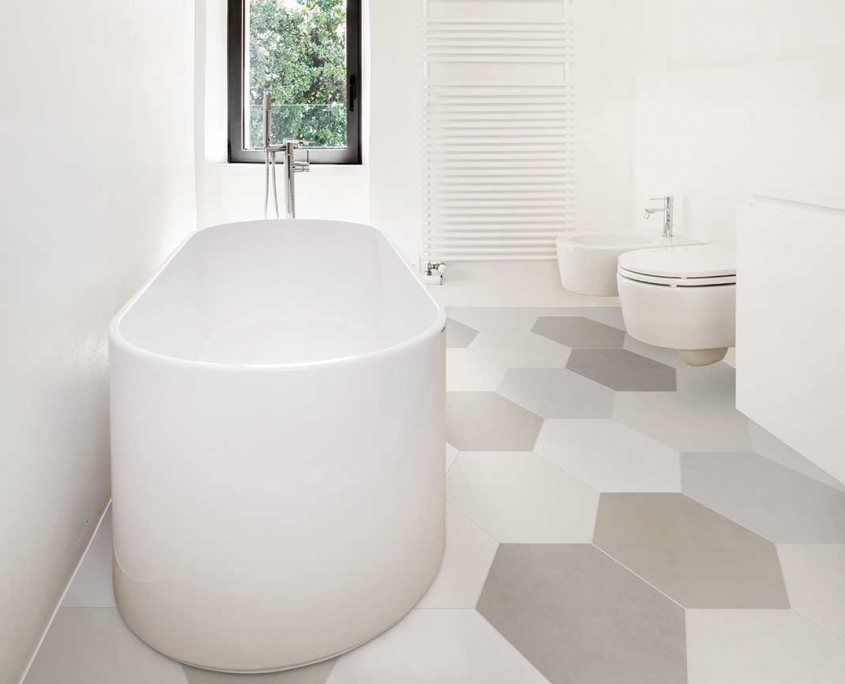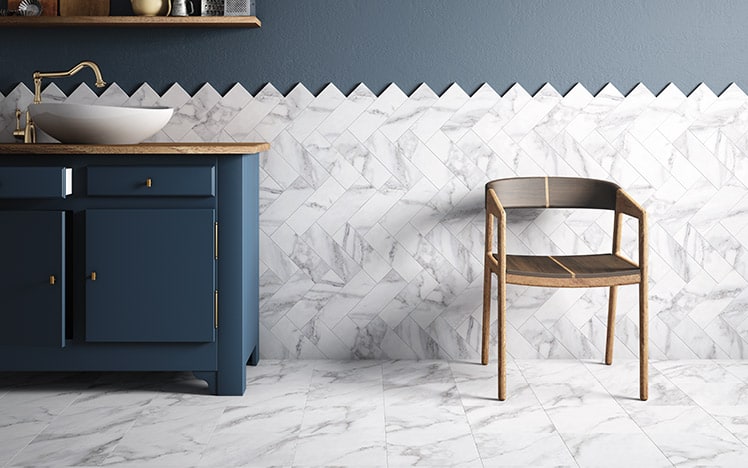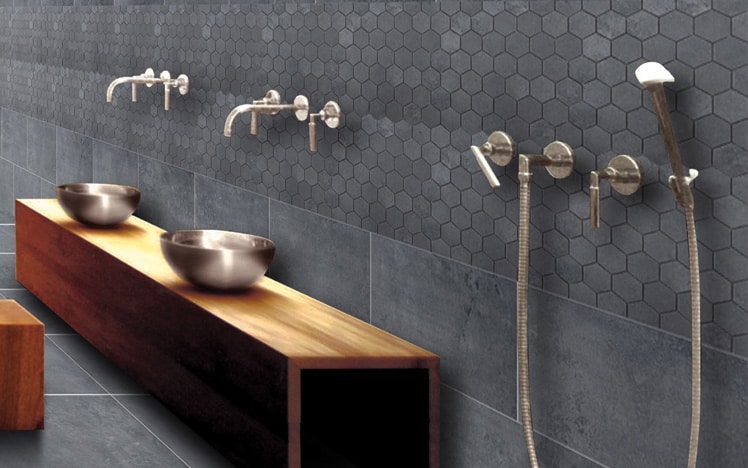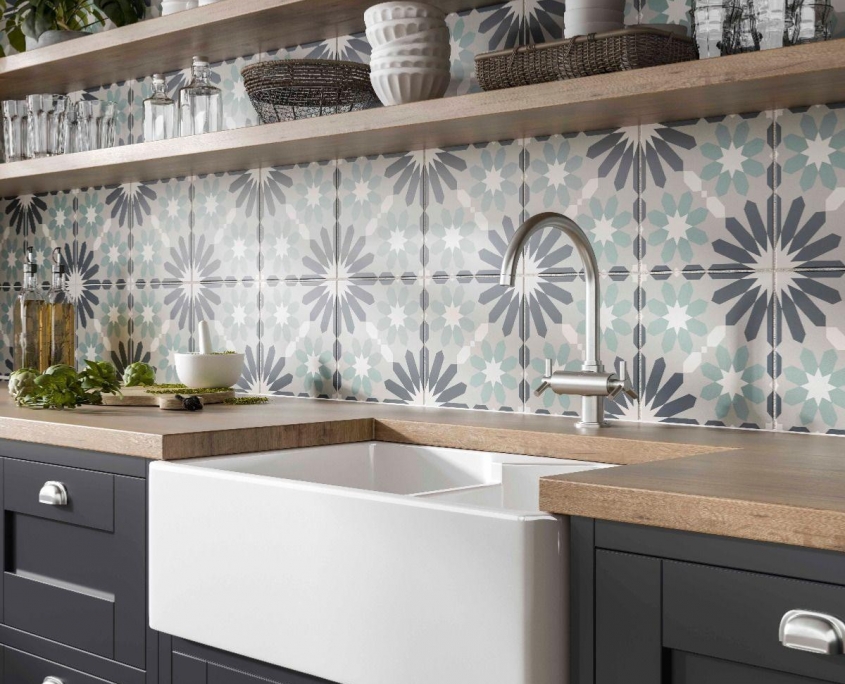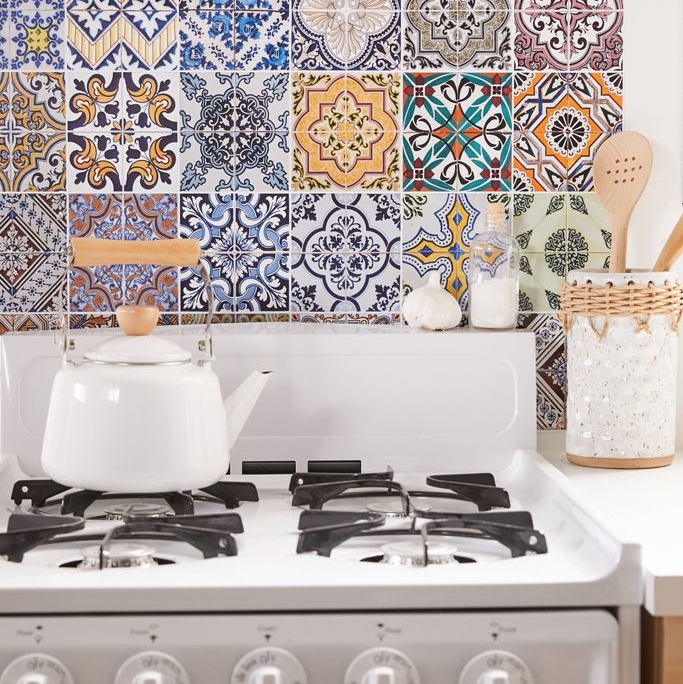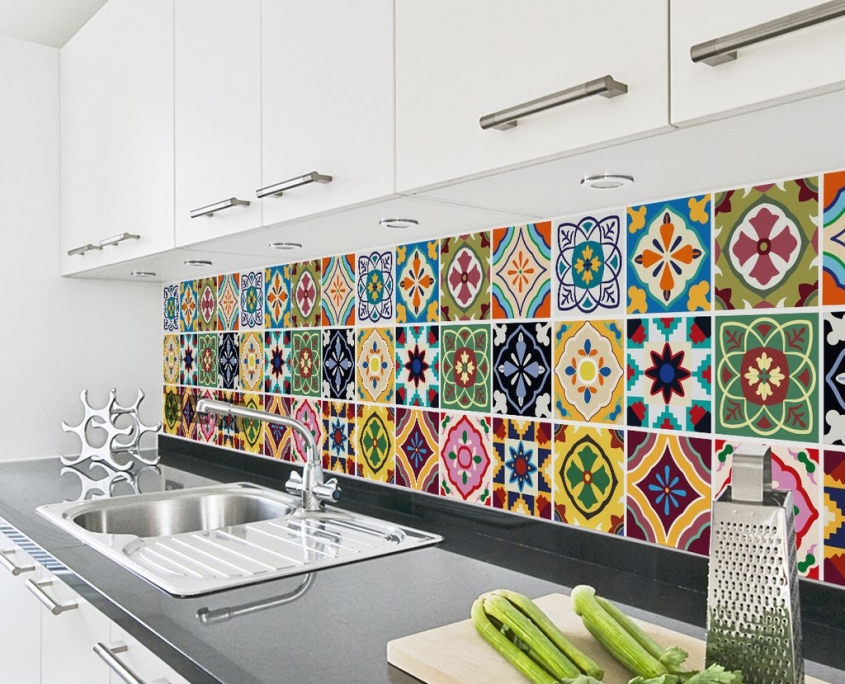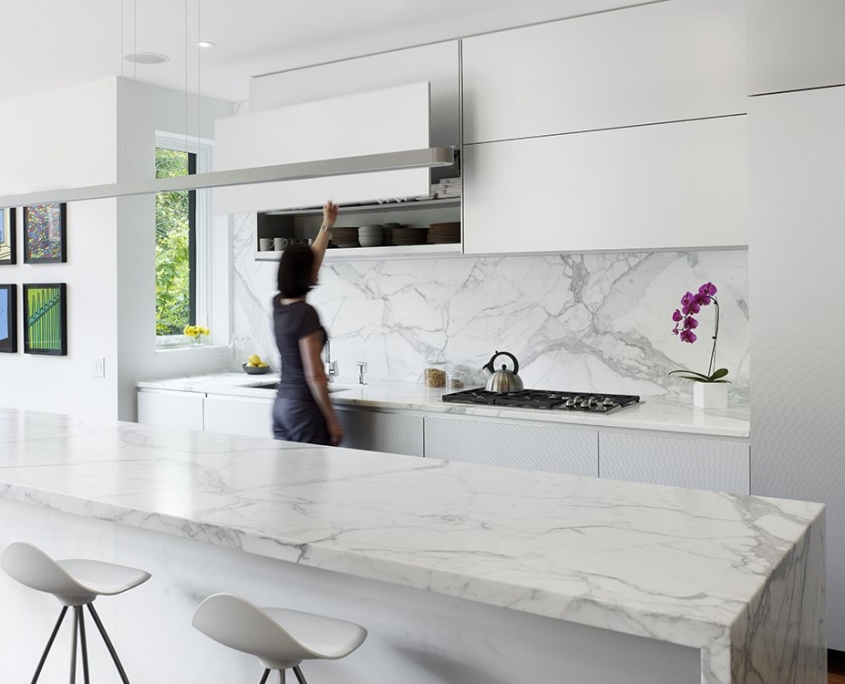Ceramic or porcelain tiles are two elegant and versatile surfaces. These tiles can be found in kitchen and bathroom floors and on walls and backsplashes. The popular tiles are available in colors and designs to match – or create – the decor of your room. Before picking the style for you, understand the difference between porcelain tile and ceramic tile.
Read on to learn the pros and cons of using porcelain vs. ceramic tile for your next project.
Ceramic tiles and porcelain tiles are similar in many ways. You can’t always tell them apart by quickly glancing at the installed products.
Both tiles are clay-based and kiln-fired, but porcelain is technically a specialized type of ceramic. The clays used to make porcelain have a higher density and are fired longer at a higher temperature than ceramic.
The difference in ingredients and production methods creates types of tile with unique characteristics. Each has its own advantages and disadvantages in the porcelain tile vs. ceramic tile decision.
How to Tell the Difference Between Ceramic and Porcelain Tile
Packaging will indicate if new tiles are porcelain or ceramic. The American Society for Testing and Materials (ASTM) has a certification process for manufacturers producing porcelain. For loose or installed tile, there are some rules of thumb that can help you determine whether it is ceramic or porcelain.
Porcelain tile has the same color throughout the material. A broken or chipped piece of unglazed porcelain will have a uniform color throughout its thickness. Ceramic tile often has a glazed surface coloring, so chips may reveal a different color underneath.
The finish of porcelain is smoother than that of ceramic. Turn over a piece of loose tile. The unglazed surface of ceramic tile will feel coarse. The finer grain of porcelain will be smooth to the touch.
Ceramic tiles aren’t as dense as porcelain and therefore are slightly lighter by comparison.
Benefits of Using Porcelain Tile
As stated above, the primary differences between porcelain and ceramic tile are composition and the manufacturing process. Porcelain is made using a mixture of finer clay packed at higher pressures and baked at higher temperatures in the kiln. This gives porcelain tile several important traits.
Durability: The density of porcelain tile makes it more durable than ceramic tile while being less subject to wear and tear. This makes it more suitable for commercial use as well as in the home.
Water Resistance: Porcelain tile is almost impervious to water compared to ceramic tile. According to the ASTM standards, porcelain must have a water absorption rate of 0.5-percent or lower. Ceramic tiles are more porous and often have a higher water absorption rate.
Through-Body Composition: Because of the uniform color of material in unglazed porcelain tile, small chips may not be as noticeable as they would be on a piece of ceramic tile.
.
Disadvantages of Using Porcelain Tile
Porcelain tile is a desirable solution for many applications, but it does have drawbacks.
Cutting: Porcelain is very strong. It requires skill using special tools to cut it. This can be challenging for an inexperienced DIYer. A homeowner may prefer to pay for professional installation.
Cost: It costs more to manufacture porcelain tile. This means a higher price compared to ceramic tile. It’s long-term durability, however, offers savings over time.
.
Benefits of Using Ceramic Tile
Versatile ceramic tile comes in finishes ranging from simple to ornate and classic to contemporary.
Cost: The differences in ingredients and preparation mean that ceramic tile can be less expensive than porcelain tile.
Ease of Cutting: Ceramic tile is easier to cut, making it better suited for home DIY projects.
Flexibility: Some experts find ceramic tile more flexible if you want a more artful, intricate and eye-catching design in such places as backsplashes. Ceramic wall tile can be preferable in such situations. In addition, glazed ceramic tiles can be customized in more colors and patterns.
Texture: Some varieties of ceramic tiles have a textured surface that adds visual depth and dimension. You can often find tiles with ripples, waves, or raised shapes.
Disadvantages of Using Ceramic Tile
Ceramic is a popular tile choice for many residential uses. However, there are other considerations.
Water Absorption: Resistance to water is perhaps the biggest factor in the ceramic tile vs. porcelain decision. Ceramic tile is more porous and therefore has a higher water absorption rate. It should not be used in outside applications.
Durability: Ceramic tile is not as tough as porcelain. Avoid using it in high-traffic areas.
Is ceramic or porcelain tile better for you?
It depends. The different types of tile are suitable for various parts of a house. The two biggest considerations are usually cost and water resistance.
Porcelain bathroom tiles have greater water resistance. They will work well in rooms subject to a lot of moisture. Ceramic and porcelain tiles are frequently used in bathrooms and showers.
When deciding between ceramic vs. porcelain tiles for shower installation, some decorators suggest balancing functionality and your budget by using ceramic shower tiles for walls and porcelain shower tiles for the flooring.
The higher water resistance of porcelain tiles makes them an option for outdoor patio or other exterior uses. This is particularly true for areas with colder weather – porous tile is more likely to absorb water and then crack in freezing conditions.
Deciding between ceramic vs. porcelain tile flooring?
Porcelain floor tile is harder and denser. It’s useful in high-traffic areas such as kitchens, mudrooms, hallways and living areas.
Ceramic floor tiles, however, tend to have a softer surface. They are more comfortable to walk on than porcelain. Their tendency to stay cooler than porcelain makes them popular in homes in warmer climates.
When evaluating the pros and cons of porcelain tile and ceramic tile, consider your taste in decor, your budget and the needs of the rooms to be decorated. Choosing between ceramic or porcelain tiles can mean prioritizing durability, water resistance and the tiles’ overall appearance.
